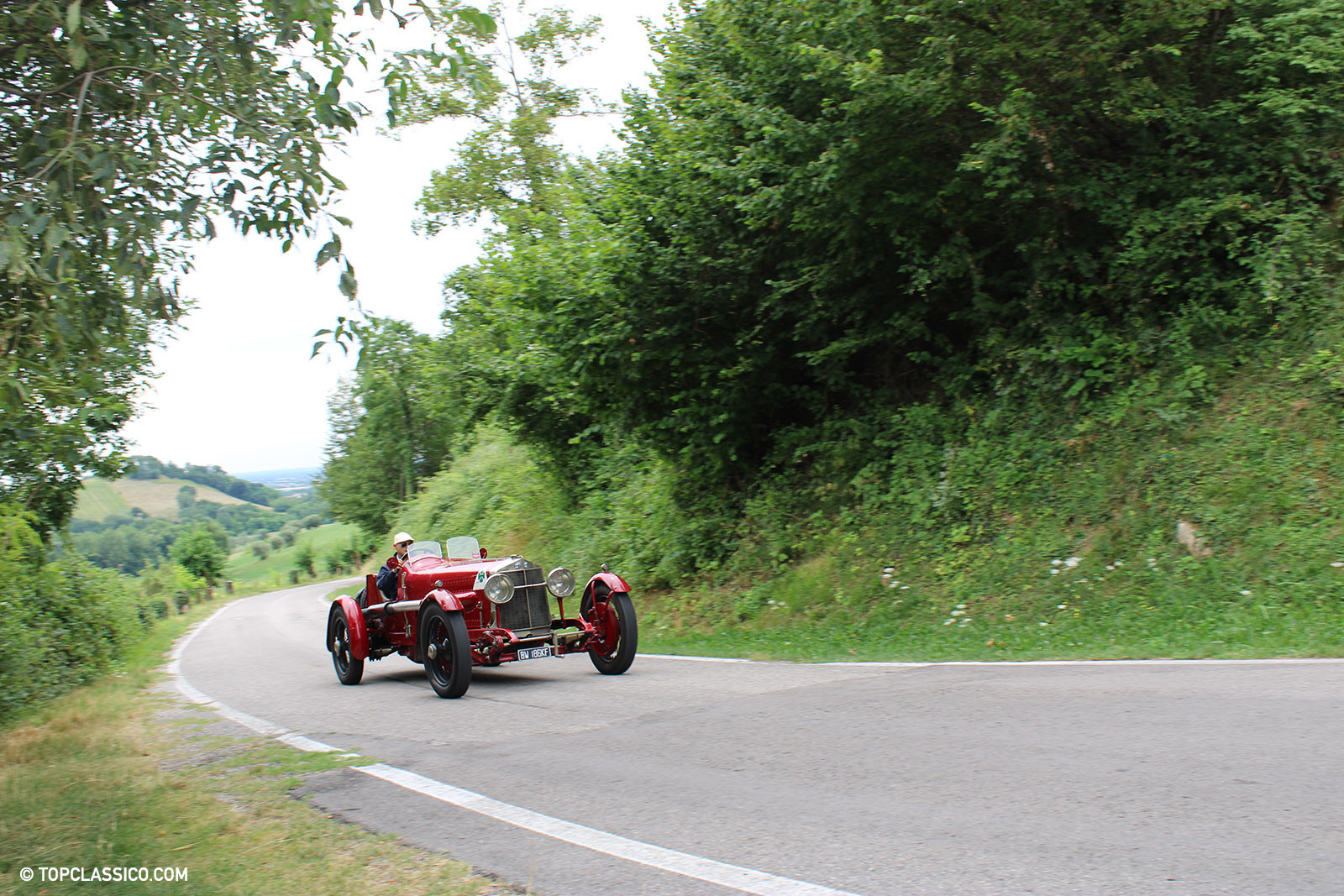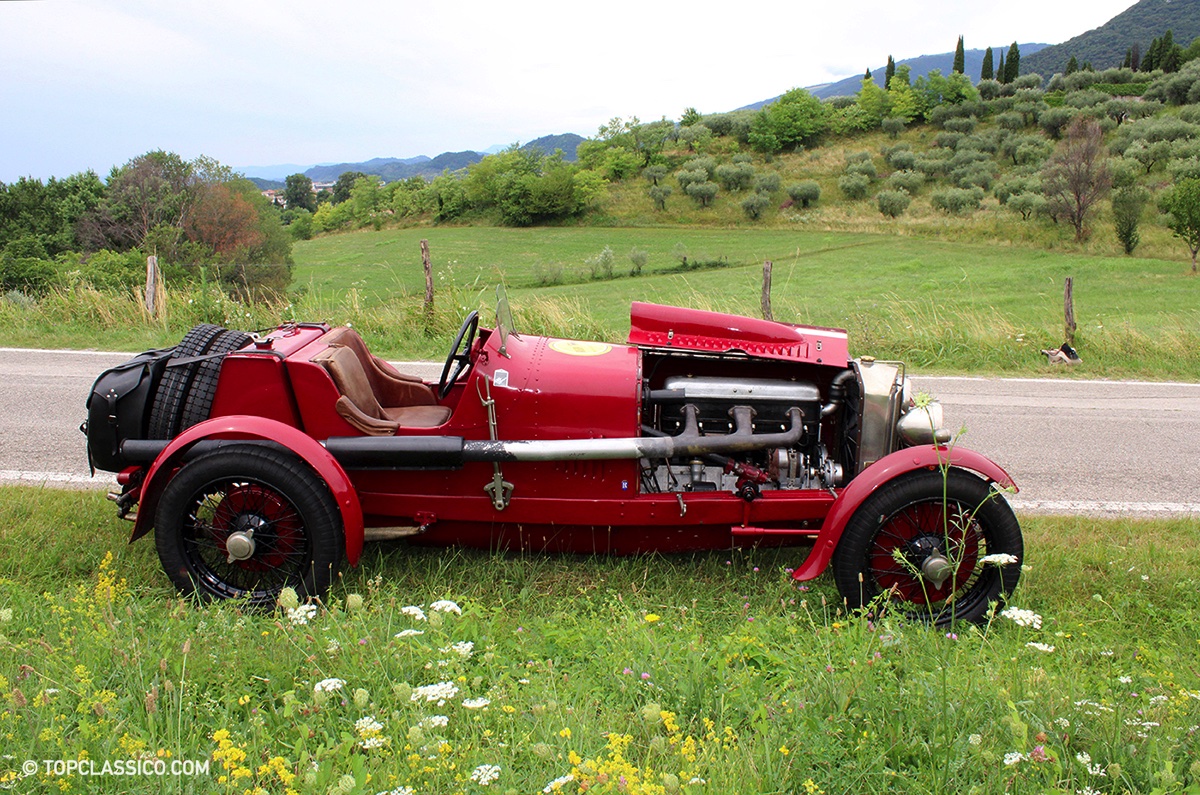The sole Alfa Romeo RL Targa Florio racer surviving today

Campaigned at the “Cursa” in 1924, it was then raced in England for a long time before getting back to its home country
This 1924 Alfa Romeo RL Targa Florio is one of the most rare and significant examples in the whole Alfa’s competitions activity. Seeing such a great piece of history still alive and driving around is impressive in itself and, even better, the owner drives it quite often, enjoying curves at full throttle. He has over 40 years’ racing experience as a gentleman driver in the USA and it’s great fun hearing this beast operating at the peak of its power when he is at the wheel.




Giulio Masetti’s car. The design of the RLs types (Romeo Lungo), with an in line six cylinder engine, started in 1920 and the first prototypes of the road versions were already ready to launch in the second half of the following year in Milan. Since its birth, the Super Sport type was widely campaigned in Italian races with works drivers, including Enzo Ferrari. Moreover they fielded specifically built racers in the Targa Florio of those years: in 1924 there were four of them. Modifications included seven main crankshaft bearings in place of the standard four. The cars also had front wheels brakes and smaller V-radiators than those in the sports models series. As reported by experts Peter Hull and Roy Slater in their “bible” Alfa Romeo. A history, Giuseppe Campari and Louis Wagner drove 3-litre engined cars, while Alberto Ascari and Giulio Masetti raced 3,6-litres, with engines developing 125 bhp at 3,800 rpm. This example, with chassis designation TF 11, is widely believed to be that of Masetti, also recognisable by the fact that at the time the number of chassis used to be the same as the driver. It’s a well known car and according to Fiva (Fédération Internationale Véhicules Anciens) it’s the sole Alfa Romeo RL Targa Florio racer surviving today.



British trophies. The vehicle registration document of this car is a museum item in itself. “Every annual tax is noted and every handover between subsequent owners has been noted in black on white as well”, the owner enthuses. After the 1924 Targa Florio, Alfa Romeo sold the RL TF without the body to Mr. Frederick W. Stiles, the first Alfa importer in Great Britain, as part of the concessionaire agreement. While in the United Kingdom, the car raced in different classes both with the 3-litre and with the 3,6-litres engines and was road registered with the number “XX 5060” on March 1925 in the name of the Alfa Romeo British Sales Ltd. It would change owner almost every month during the first two years there, each time returning to the dealer, showing that it was likely rented to various people for competitions and was always registered again in the borrower’s name who could enter it as a member of the organizing clubs. Its bodywork was a two-seater with a pointed tail by A. E. Leadbetter, while a starter motor, lamps and dynamo were also added.





New life, old dress. In the early Sixties this RL TF was raced in VSCC events until earl Giovanni Lurani bought it and brought it back to Italy at the end of the decade. He was a very well known gentleman driver who completely rebuilt the original Targa Florio body of the RL, which was then kept by his daughter Cica from 1995. The sale to the current custodian happened in 2014, more than 40 years after the last handover. As we can imagine, the drive doesn’t feel easy but “it’s fantastic!”, the owner assures. “It’s heavy and tiring because the engine is huge, although the car reacts very quickly and allows you to correct the steering mid curve if needed. In particular the left hip struggles as the clutch is very heavy, like an unassisted truck, but even if you’re feeling pain you don’t actually give up on changing gear as the adrenaline is inevitably coursing through you. Naturally, you have to give the car the opportunity to stretch its legs, as it wasn’t built to go to the church!”. And what about its bellowing soundtrack? The owner has no doubts: “It bursts your eardrums, but that’s the way they used to race at the time and that’s how it must remain”.
© ALL RIGHTS RESERVED

